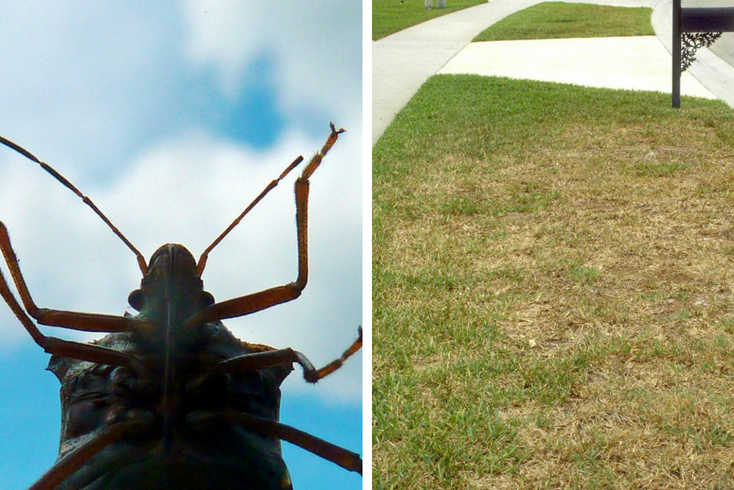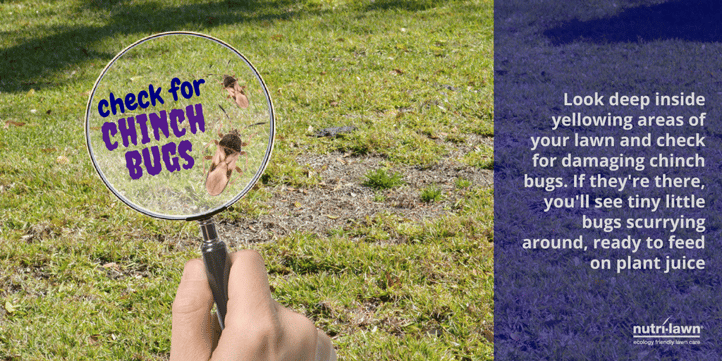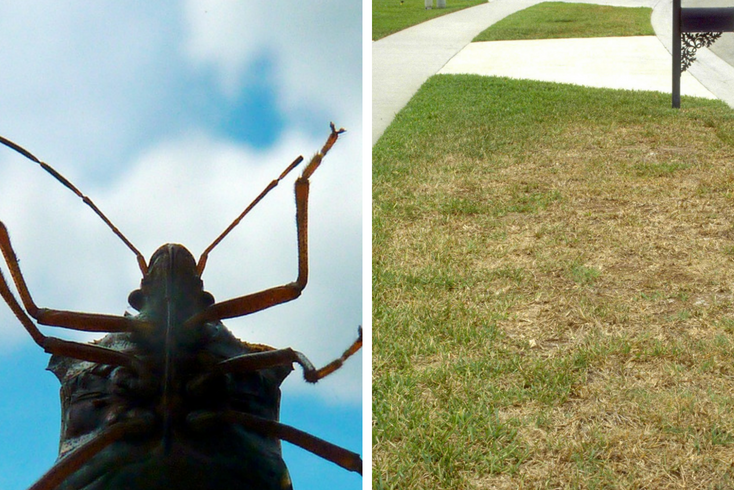
Just like us, Chinch Bugs are most active in the summer when hot and dry temperatures persist. Unlike us, they live in the thatch layer of your lawn where they feed on the grass and suck out plant juice. Pesky buggers!
When chinch bugs feed, they release enzymes that facilitate easy feeding. The enzymes continue damaging the plant after feeding, and cause the grass to turn brown and potentially die.
Chinch bugs are generally found in hot, sunny areas of a lawn. They tend to aggregate, which initially results in localized dead patches. These dead areas are brown, irregular sunken patches, which can coalesce into larger dead areas. Damage generally becomes evident in July and August when temperatures get hot and drought conditions become more prevalent.

Chinch bugs are tiny, but don't let that fool you; they can cause major damage to your lawn if left untreated. The damaging nymphal life stage of the chinch bug is bright red in color with a white stripe across its back. In order to find them you will have to get down on your hands and knees and spread the turf apart. The best place to look for active chinch bugs is in areas where the stressed turf meets the healthy turf.
Here are our top tips for preventing and recovering from pesky chinch bug infestations.
Water the Lawn
Since this pest requires hot dry conditions for optimum survival and reproduction, irrigation during spring and early summer may increase the incidence of pathogen spread, especially the lethal fungus, Beauveria spp. The adults can withstand water because of the protective hairs on the body but the nymphs readily get wet and can be damaged by large water droplets.

Use Resistant Turfgrasses
Overseed areas that have historically been damaged by chinch bugs with perennial ryegrasses, fine fescues and tall fescues that contain entophytic fungi. Endophytic grasses deter chinch bug feeding.
Use Pest Control
Chinch bugs are rather easy to detect in turf and targeted insecticide applications can be applied to reduce populations which appear to be building to damaging levels.
Talk to your local Nutri-Lawn about Integrated Pest Management principles effective for controlling chinch bugs.
What Recovery Looks Like
Slightly damaged turf will recover rather quickly if lightly fertilized and watered regularly. Heavily infested lawns may have significant plant mortality because of the toxic effect of chinch bug saliva and reseeding will be necessary.
Major damage caused by chinch bugs is often mistaken for drought stress and not treated accordingly. It's important to identify, treat and eliminate chinch bug infestations before they multiply and chinch bug damage becomes extensive to a lawn.
Follow us on Facebook or Pinterest for more from lawncare tips & tricks.








